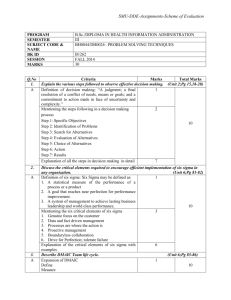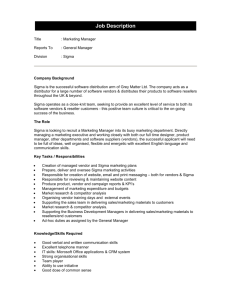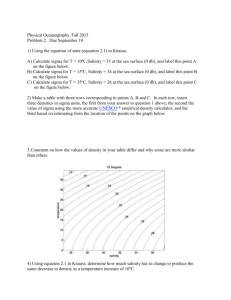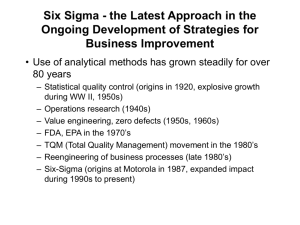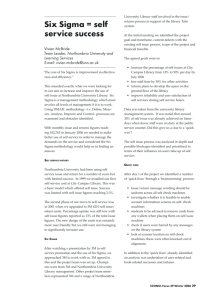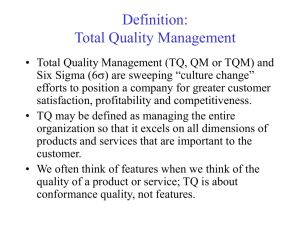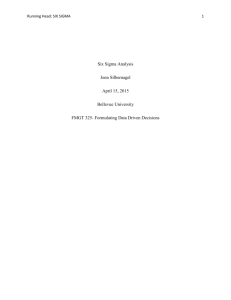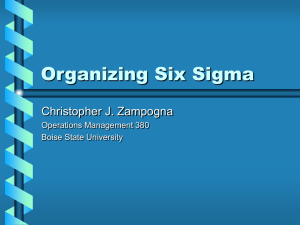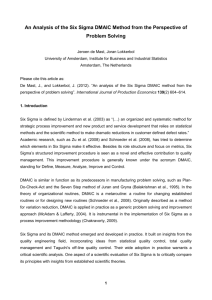The Six Sigma Revolution: How General Electric and
advertisement
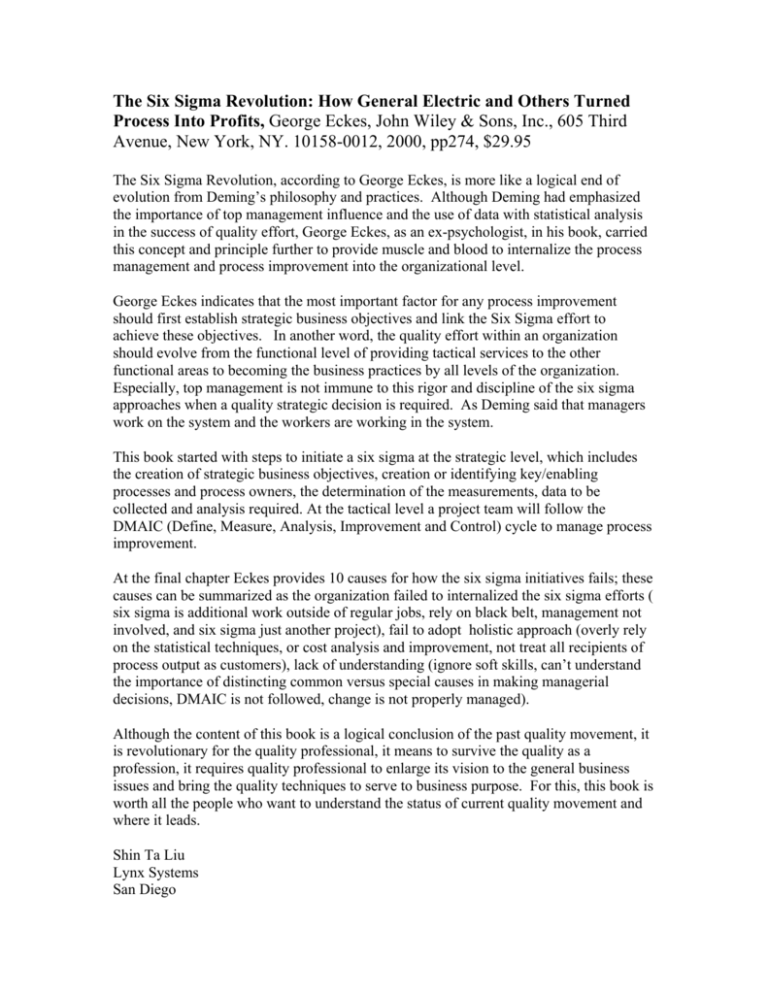
The Six Sigma Revolution: How General Electric and Others Turned Process Into Profits, George Eckes, John Wiley & Sons, Inc., 605 Third Avenue, New York, NY. 10158-0012, 2000, pp274, $29.95 The Six Sigma Revolution, according to George Eckes, is more like a logical end of evolution from Deming’s philosophy and practices. Although Deming had emphasized the importance of top management influence and the use of data with statistical analysis in the success of quality effort, George Eckes, as an ex-psychologist, in his book, carried this concept and principle further to provide muscle and blood to internalize the process management and process improvement into the organizational level. George Eckes indicates that the most important factor for any process improvement should first establish strategic business objectives and link the Six Sigma effort to achieve these objectives. In another word, the quality effort within an organization should evolve from the functional level of providing tactical services to the other functional areas to becoming the business practices by all levels of the organization. Especially, top management is not immune to this rigor and discipline of the six sigma approaches when a quality strategic decision is required. As Deming said that managers work on the system and the workers are working in the system. This book started with steps to initiate a six sigma at the strategic level, which includes the creation of strategic business objectives, creation or identifying key/enabling processes and process owners, the determination of the measurements, data to be collected and analysis required. At the tactical level a project team will follow the DMAIC (Define, Measure, Analysis, Improvement and Control) cycle to manage process improvement. At the final chapter Eckes provides 10 causes for how the six sigma initiatives fails; these causes can be summarized as the organization failed to internalized the six sigma efforts ( six sigma is additional work outside of regular jobs, rely on black belt, management not involved, and six sigma just another project), fail to adopt holistic approach (overly rely on the statistical techniques, or cost analysis and improvement, not treat all recipients of process output as customers), lack of understanding (ignore soft skills, can’t understand the importance of distincting common versus special causes in making managerial decisions, DMAIC is not followed, change is not properly managed). Although the content of this book is a logical conclusion of the past quality movement, it is revolutionary for the quality professional, it means to survive the quality as a profession, it requires quality professional to enlarge its vision to the general business issues and bring the quality techniques to serve to business purpose. For this, this book is worth all the people who want to understand the status of current quality movement and where it leads. Shin Ta Liu Lynx Systems San Diego




